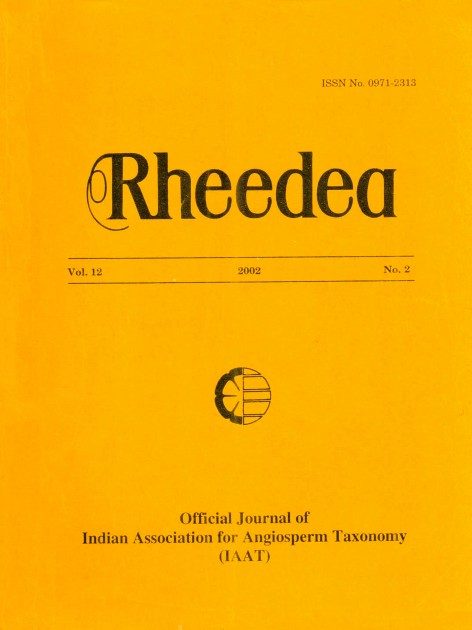A molecular systematic study of Aralia L. and Panax L. (Araliaceae) in India, and its taxonomic implications
Pandey A.K., Chunghee Lee & Jun Wen
Published on : 01-Jan-2022
DOI : https://dx.doi.org/10.22244/rheedea.2002.12.02.01
DownloadAbstract
The internal transcribed spacer (ITS) regions of nuclear ribosomal DNA were sequenced from 33 accessions belonging to four genera (Aralia, Brassaiopsis, Merrilliopanax and Panax) to assess phylogenetic relationships of taxa distributed in different geographic regions. The ITS sequence data support the monophyly of both, Aralia and Panax and show a close relationship between the two genera. Within Aralia, taxa of Aralia sect. Dimorphanthus (Aralia armata, A. finlaysoniana, A. foliolosa, A. hiepiana and A. spinifolia) form a strongly supported monophyletic group whereas the monophyly of Aralia and sect. Pentapanax, (A. gigantea, A. leschenaultii and A. parasitica) is only weakly suggested. Panax assamicus from India forms a clade with P. bipinnatifidus, P. ginseng, P. shangianus, P. wangianus and P. variabilis from the Sino-Himalyan region, as well as P. quinquefolius from North America. Molecular differentiation is detected among Panax assamicus from India, P. variabilis from Southwestern China, and P. wangianus from West-Central China, although these taxa have differentiated very little at the morphological level.
